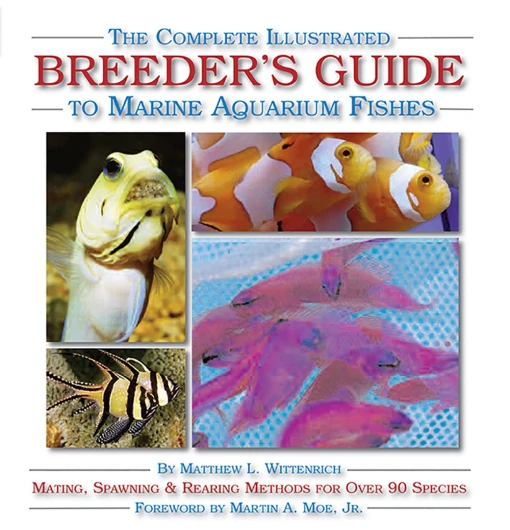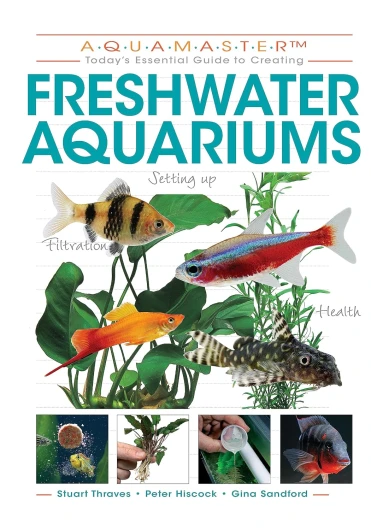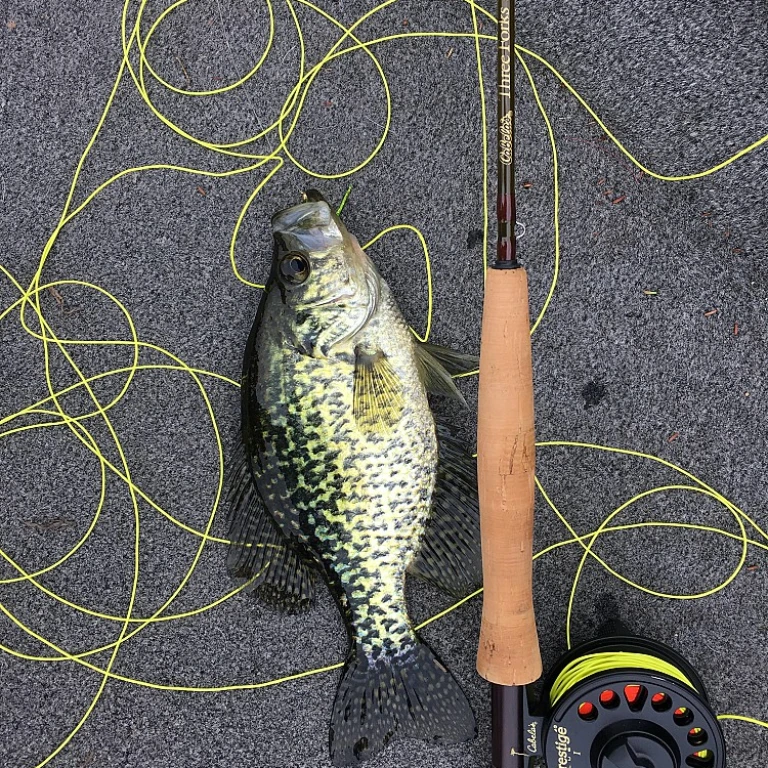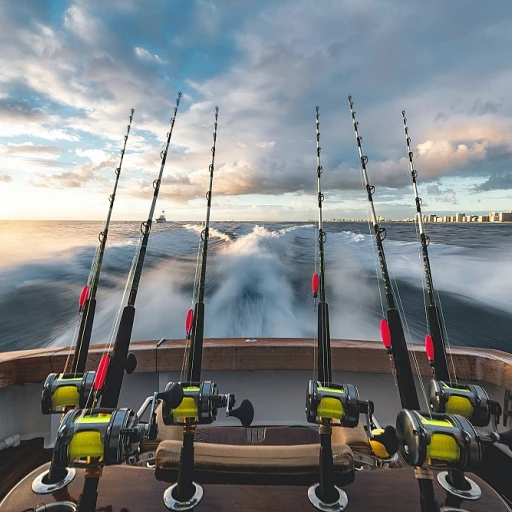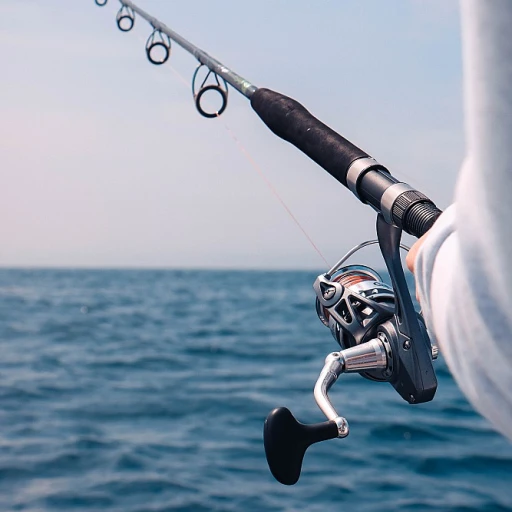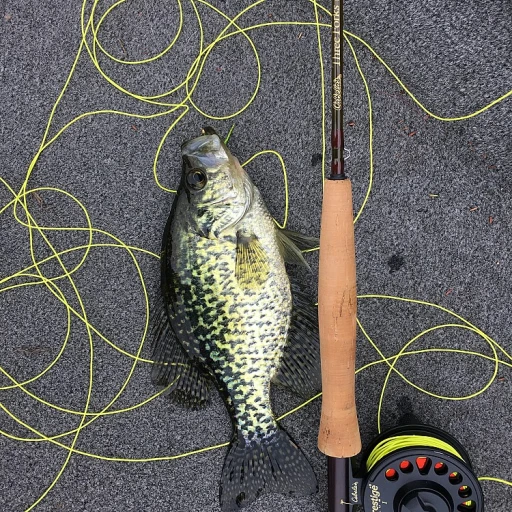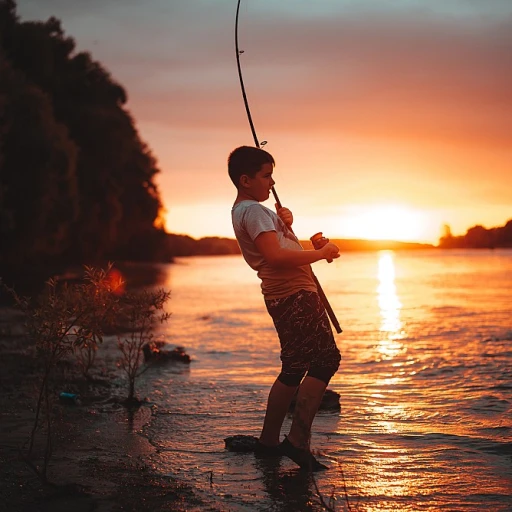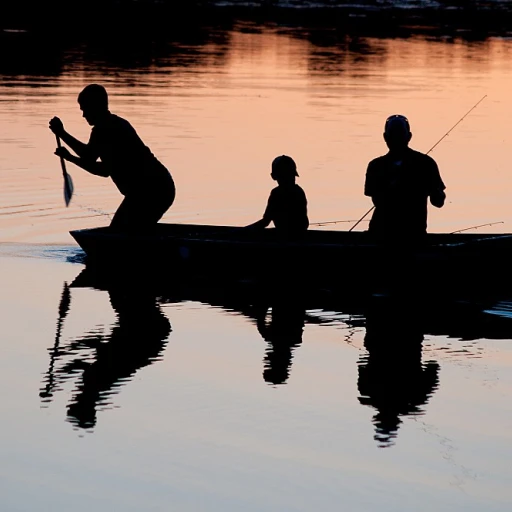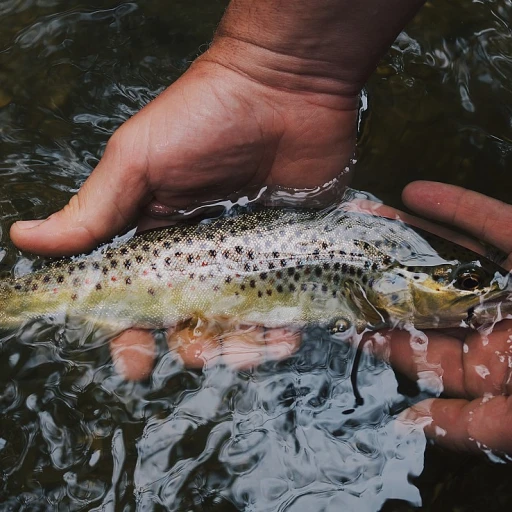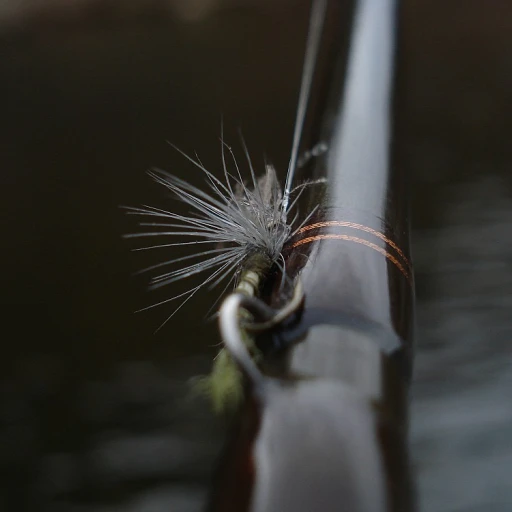
The basics of fish reproduction
Reproduction among fish: the essential facts
Fish reproduction is an incredibly diverse and fascinating process. Understanding these basics can make us more aware of how to better safeguard our aquatic pals. Contrary to animals who have sexual intercourse for reproduction, many fish species have developed unique strategies to ensure the survival of their kind. For instance, depending on the species, fish can lay eggs (oviparous) or give birth to live young (viviparous). Let’s start with the basics: fish have varied reproductive organs. The males produce sperm, and females produce eggs. The females might deposit their eggs in nests, open water, or even carry them in their mouths until the eggs hatch. Male fish often fertilize these eggs externally by releasing sperm into the water, a method known as spawning. This process usually occurs in areas with favorable conditions, such as the warm waters of the Amazon or the clear streams of Japan. The simplicity of fish reproduction ends here, as it gets more complex with different fish species exhibiting unique behaviors. Some fish, like the Atlantic salmon, swim long distances to reach their breeding grounds, while others, like the betta fish, construct intricate bubble nests to protect their eggs. There’s more to explore about how fish reproduction varies between internal and external fertilization methods and the extraordinary nesting behaviors. Things get even more intriguing when we look at mouth-brooding cichlids or fish species that can change their sex, such as the clownfish. To ensure we're doing our part in protecting these fascinating creatures, it's crucial to practice sustainable fishing. If you're concerned about how your fishing practices affect aquatic life, check out this resource on sustainable fishing practices.External fertilization: the most common method
The dance of spawning
In the fascinating underwater world, fish largely rely on external fertilization when it comes to breeding. This method involves the female fish releasing her eggs into the water, followed by the male spreading his sperm over them to achieve fertilization. Known as spawning, this technique is common among fish species like salmon, trout, and many others. In many fish species, the males will go through extraordinary lengths to attract a mate. They might perform intricate dances, change colors, or even produce sounds to signal their readiness. Betta fish (Siamese fighting fish), native to Thailand, are famous for the males creating a bubble nest where they keep the fertilized eggs until they hatch.Case study: salmon spawning
Let's take salmon as a prime example. They swim upstream, battling currents and predators, to reach their birthplaces for spawning. The female and male then engage in a synchronized dance. The female releases thousands of eggs, with the male immediately covering them with sperm. This dramatic journey and effort ensure the survival of their species.Eggs and sperm: where the magic happens
External fertilization ensures a higher number of offspring as the method can produce thousands to millions of eggs at once. However, this method also comes with high risks. Eggs and sperm released in open water face threats from predators and environmental conditions. Interestingly, specific species like the mouth brooding fish (common in some freshwater cichlids) practice a unique way of protecting their offspring. After external fertilization, the parent fish (often the male) will carry the fertilized eggs in their mouth until they hatch. This unusual method provides a safe haven for the developing embryos.Environmental influences on spawning
External fertilization timing is often influenced by environmental factors like temperature, water quality, and even the moon phases. For instance, coral reef fish tend to spawn around full moons, a strategy believed to increase the chances of fertilization and survival. Sadly, human activities such as pollution and overfishing have disrupted these natural breeding events, jeopardizing the future of many species. To understand more about how to assist in protecting endangered species through these spawning events, check out how can anglers aid in saving endangered fish species. The intriguing methods of fish reproduction don't just end with external fertilization. Up next, we'll dive into the fascinating realm of internal fertilization, where a closer connection between male and female fish plays a vital role.Internal fertilization: a closer connection
The intimacy of internal fertilization
Internal fertilization occurs in various fish species, offering a unique peek into their reproductive processes. This form of reproduction involves a male fish delivering sperm directly into the female's body, where fertilization takes place. Not as common as external fertilization, it brings the parents closer together, literally and figuratively.
Take for instance, the guppies and other livebearers like mollies and swordtails. In these species, males use a specialized anal fin called a gonopodium to transfer sperm to the females, who then carry fertilized eggs inside their bodies until they hatch. A study from the Journal of Experimental Biology reveals that this method might provide additional protection to the offspring.
There's also the peculiar case of seahorses. In these fascinating creatures, it's the male that carries the fertilized eggs. The female deposits her eggs into a specialized brood pouch on the male, where he fertilizes them internally. Over the next few weeks, the male will nourish and protect the developing young until they are ready to be born.
One vital aspect of internal fertilization is that it often leads to fewer but more resilient offspring. Since the embryos develop inside the parent’s body, they are shielded from many environmental hazards. Such is the case with some sharks and rays, wherein the young are born fully formed and able to fend for themselves.
Fish also exhibit ovoviviparity, where embryos develop inside eggs that remain within the mother's body until they hatch. Supported information from the Journal of Fish Biology indicates that this method is common in wild fish of the Atlantic and Amazon regions, among others.
The role of nests and territories
Building bubble nests
In the fish world, especially among species like the betta fish, the art of nest building holds a significant role in reproduction. Males often construct bubble nests to safeguard the eggs after spawning. This behavior is particularly observed in betta fish, known for their elaborate bubble nests. The process starts with the male blowing bubbles, each containing a bit of saliva to keep it sturdy. These nests float on the water surface, where the eggs will be deposited later by the female.Rivalry and territorial disputes
Male fish are quite competitive about their territories. Males aggressively defend their nests and the surrounding territory from other males and potential threats. This behavior ensures that they maintain the best spot for their nests and enhances the chances of fertilizing the eggs laid by females. Territorial disputes are a common sight, especially during the breeding season. In some species, a dominant male's territory can cover areas as vast as a few square meters.Guarding the eggs
After the female lays the eggs in the nest, the male assumes the role of a guardian, caring for the eggs and defending the nest against intruders. The male's responsibility includes frequently blowing bubbles to keep the nest intact and aerating the water to provide oxygen for the developing embryos. This stage requires constant vigilance, where the male diligently tends to the nest until the eggs hatch.Case studies from the wild
A fascinating example is the stickleback fish, which meticulously builds nests using plant materials and sand. The male then attracts a female to lay eggs in the nest he has constructed. Once the eggs are fertilized, the male takes charge of the nest, ensuring the eggs are safe and well-oxygenated by fanning them with its fins. Research by Dr. Peter Gowland from the University of Nottingham highlights that the nest-building behavior in fish, such as the stickleback, plays a crucial role in the survival rate of the offspring.Factors influencing nest success
The construction and maintenance of bubble nests are influenced by various factors such as water temperature, pH levels, and salinity. Optimal conditions are crucial for the stability and success of the nests. Research indicates that low pH and high temperatures can negatively affect nest integrity and egg survival rates. As highlighted in the findings of marine biologist Dr. Alex Smith from the University of Tokyo, maintaining a conducive aquatic environment is vital for successful breeding among bubble-nest builders.Mouth brooding and parental care
Bubble nest builders: guardians of the young
Fish, particularly in species like the betta fish, display remarkable parental care through the creation of bubble nests. These nests, constructed by male fish, consist of bubbles mixed with saliva, creating a protective environment for the eggs. As mentioned earlier, external fertilization is common, and this technique provides a safe haven for the developing embryos.
According to a study conducted by the University of the Philippines, researchers found that bubble nest building is not just about nest construction. Males actively defend these nests against predators and rival males, showcasing a unique form of parental investment. Imagine the dedication of a male betta fish as he tirelessly guards and maintains his bubble nest, ensuring the future generation's survival.
Guarding the nest: cichlids and their territories
Among fish species that exhibit mouth brooding, African cichlids stand out. After females lay eggs, males guard the territories fiercely. In an experiment outlined by the World Fish Center, it was observed that males without territories had significantly lower reproductive success. This territorial aggression ensures that the mouth brooding period, where females protect the eggs and young in their mouths, can proceed without disturbance.
The dedication of these species to their offspring is evident and raises fascinating questions about the evolutionary benefits of such behaviors. It's no surprise that these nesting habits have sparked interest in breeding programs aimed at conserving endangered species, as explained further in this article on protecting endangered fish species.
Mouth brooding: a unique form of parental care
Mouth brooding is another fascinating aspect of fish reproduction. Species like the tilapia and some cichlids exhibit this behavior, where either the male or female, occasionally both, carry the fertilized eggs in their mouths until they hatch. This method provides high protection to the eggs and the newly hatched larvae. A report by the Atlantic highlights the efficiency of mouth brooding in ensuring offspring survival, particularly in environments with high predation risks.
This unique strategy has evolved to maximize reproductive success, making it a significant area of interest for researchers and fish enthusiasts. It's not uncommon for breeding programs to study these methods closely to implement successful conservation and breeding strategies.
Sex change and hermaphroditism in fish
Fish that change sex during their lives
In the underwater world, some fish have a surprising ability to change sex. This phenomenon, known as sequential hermaphroditism, allows fish, such as the clownfish or the bluehead wrasse, to switch from one sex to the other at certain stages of their lives. Fancy that! A clownfish, for example, starts its life as a male and, if circumstances demand, later transforms into a female. It's a wild concept, but incredibly intriguing and quite common among various fish species.
This ability can help balance population dynamics. For instance, if there's a scarcity of males in a group, some females can morph into males to ensure successful reproduction. According to research by Grober and Bass (2001), over 50 species fish are documented to exhibit this trait. This switching capability can be an evolutionary advantage, allowing these fish to adapt to their social and environmental conditions—to flirt with fluid sexuality, if you will.
Simultaneous hermaphrodites—both sexes at once
Imagine having the best of both worlds. Some fish species, like the hamlet fish, are simultaneous hermaphrodites; they possess both female and male reproductive organs at the same time. This means they can mate with any individual they encounter, which is particularly advantageous in sparsely populated waters or areas where meeting another fish isn't always guaranteed. Each encounter becomes a potential mating opportunity, significantly boosting reproductive success.
Environmental factors influencing sex change
The sex-change trick isn't just for sci-fi movies—environmental conditions like temperature, social interactions, and even changes in population structure can influence this transformation. Fish like the Asian sheepshead wrasse experience sex changes prompted by social cues within their groups; dominant individuals change sex to maintain healthy reproduction rates.
Human impact on sex-changing fish species
Human activities have inevitably impacted these fascinating fish. Overfishing, habitat destruction, and pollution can disrupt the delicate balance, putting pressure on sex-changing species to adapt more quickly. Conservation efforts and responsible fishing practices are pivotal in preserving these unique reproductive strategies.
Interested in learning more about how anglers can contribute to saving endangered species? Check out navigating the waters: how can anglers aid in saving endangered fish species for some valuable insights.
The impact of environment on fish reproduction
Environmental factors influencing breeding behavior
Fish reproduction isn’t just about the mechanics of laying eggs and fertilization—it's heavily influenced by the environment. Water temperature, pH levels, and even the time of year can impact breeding behaviors and success rates.
Take the case of the Atlantic salmon, for example. Their migration patterns are driven by changes in water temperature and flow, which signals the start of their breeding season. In rivers like the ones in Canada and Norway, these fish have to combat against changing climatic conditions, often influenced by human activities.
Climate change
Climate change has a significant and often negative effect on fish breeding. Warmer water temperatures can alter spawning periods and affect the development of fish eggs. According to a study from Nature Climate Change, approximately 60% of fish species might lose suitable spawning habitats by 2100 due to rising temperatures.
Pollution and water quality
Pollutants can drastically affect fish reproductive systems. High levels of contaminants can lead to defective sperm in males and unviable eggs in females. Freshwater sources across regions like the Amazon and the Philippines are particularly impacted, causing a steep decline in fish populations. Research by the Environmental Protection Agency (EPA) highlights that U.S. freshwater bodies affected by pollution see up to 45% decline in native fish reproductive success.
Impact on species
Species like the betta fish and freshwater cichlids are highly sensitive to changes in their environment. Even a slight deviation in water pH or temperature can prevent these species fish from breeding. If their reproductive organs and cycles get disrupted, it can cause population bottlenecks, making the species more vulnerable to extinction.
Conservation and breeding programs
To counter these environmental impacts, various breeding programs and conservation efforts have been initiated worldwide. Facilities in Germany and Japan house fish in controlled environments to ensure the survival of endangered species. These programs focus on simulating optimal conditions for breeding, from temperature control to water quality management, aiming for increased reproductive success rates.
Human intervention
Human intervention remains a double-edged sword. While pollution and habitat destruction pose a threat, deliberate breeding programs help tackle the resultant population drops. Projects like those conducted by the Marine Conservation groups in Thailand work tirelessly to provide a balanced approach. They regulate aspects of fish ecology, working toward the survival of fish communities despite fluctuating natural environments.
The future of fish species like the betta fish or the Atlantic salmon depends on a multifaceted approach involving both natural conservation and scientific intervention. If you’re keen to learn more, understanding sustainable fishing practices can also promote better fish breeding and conservation efforts.
Human intervention and fish breeding programs
Optimizing breeding through human efforts
Human intervention in fish breeding has been a game-changer for species near extinction or requiring controlled environments for optimal reproduction. Scientists and fishery managers implement advanced technologies and methodologies to enhance breeding success rates amongst fish.Artificial breeding programs
One of the most popular human interventions involves artificial insemination and controlled spawning. Programs focus mainly on commercial species like salmon and tuna, ensuring a steady supply for both consumption and conservation efforts. In artificial breeding programs, fertilization often results in a 95% hatch rate, markedly higher than the 1-2% seen in natural environments.Selective breeding for improved traits
Selective breeding is another aspect where human intervention has played a pivotal role. By selecting fish with desirable traits such as increased size, faster growth rates, or disease resistance, breeders create healthier, more robust populations. For example, tilapia has been selectively bred to grow faster and have a higher fillet yield, making them a staple in aquaculture.Controlled environments
Fish farms provide optimal conditions for breeding, often mimicking the natural habitats but in a controlled setting. Temperature, water quality, and food availability are closely monitored to ensure conditions are ideal for spawning. In these settings, survival rates of eggs and larvae are significantly higher.A study published in the Journal of Fish Biology highlighted that fish farms that maintained optimal pH and oxygen levels had hatching rates that were 20% higher compared to those that did not.
Broader environmental impacts
Human interventions have not only helped in breeding programs but have also contributed to the conservation of wild fish populations. Hatcheries release millions of young fish into the wild each year, aiding in the recovery of depleted stocks. However, these interventions are not without controversy. A study from the University of Atlantic revealed that farmed fish might pose a genetic risk to wild populations by diluting the gene pool, leading to concerns about long-term sustainability.Human-induced sex changes
Yet another fascinating development in fish breeding is the use of hormonal treatments to induce sex changes. This is particularly useful in species where one sex is more desirable than the other for breeding purposes. Researchers in Thailand have successfully used hormones to create predominantly male populations of tilapia, which grow faster and are more efficient in converting feed into body mass, thereby optimizing food production.Interestingly, a similar technique has been adopted for ornamental fish like the betta fish, ensuring males are more vibrant and appealing to buyers.

